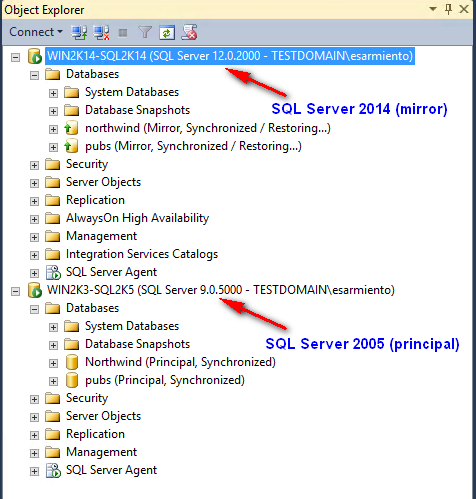There have been a lot of blog posts and articles written about the Delayed Durability feature in SQL Server 2014. Here are a couple of them to get you started. Delayed Durability in SQL Server 2014 by SQL Server MVP/Regional Director and SQLSkills CEO Paul Randal (blog | Twitter) Delayed Durability in SQL Server 2014 by […]
PostVideo: How To Simplify Installation and Configuration of a 2-node Multi-Subnet/Geographically Dispersed SQL Server (2012 and higher) Failover Clustered Instance
In a previous blog post, I’ve demonstrated how to install and configure a 2-node SQL Server 2012 failover clustered instance (FCI.) As a follow-up, below is a video on how to install and configure a multi-subnet/geographically dispersed SQL Server 2012 (and higher) FCI. When SQL Server 2012 introduced the support for multi-subnet clustering, there have been […]
PostIn-Memory OLTP in SQL Server: Logging Comparison with Disk-Based Tables
In a previous blog post, I talked about Partition-Level Online Index Operations in SQL Server 2014 and how it affects high availability and disaster recovery. With more features being added in every new version of SQL Server, it’s important to understand how its implementation will affect your overall objectives. One feature that got a lot […]
PostPartition-Level Online Index Operations in SQL Server 2014 and its Impact in HA/DR
One of the cool features introduced in SQL Server 2014 was the ability to perform an online index rebuild of a single partition. Prior to SQL Server 2014, the only way to rebuild indexes for a partitioned table was to do it on all of the partitions (or, simply put, rebuild the entire index on […]
PostUpgrading SQL Server 2005 Databases to SQL Server 2014 (and higher) using Database Mirroring

It is a reality for a lot of customers – they still have SQL Server 2005 in their environments. It is only now that they are planning for upgrading their databases to the latest version of SQL Server. In a previous blog post, I talked about how to integrate Microsoft Product Lifecycle and Support Policies into […]
PostUsing a “True” Shared Disk With SQL Server 2014 (and higher versions) and Cluster Shared Volume
One of the demos that I show when I talk about AND dependencies in a Windows Server Failover Cluster is moving a SQL Server resource group (or role as of Windows Server 2012 and higher) to a different cluster node. During the failover, I highlight that the SQL Server cluster resource will not come online until […]
